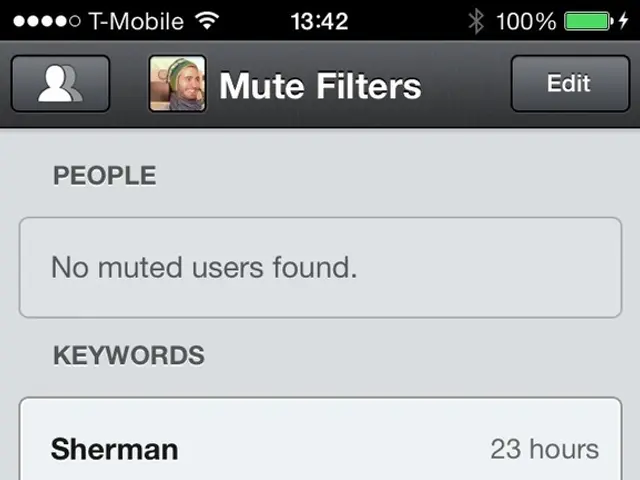Can a Former Scientist and Persistent Gardener Reveal the Sugar's Role in Nurturing a Thick, Vibrant Lawn?
The "Sugar Lawn Hack" is a recently circulating internet tip that suggests applying white table sugar to a lawn as a natural fertilizer and weed control method. This idea is based on the theory that boosted microbial activity in the lawn takes up a lot of nitrogen, starving broadleaf weeds without harming the grass.
However, it's important to note that the effectiveness of the Sugar Lawn Hack as a lawn care solution is uncertain and may be considered a lawn care myth. While sugar is said to inhibit weeds like nutgrass by temporarily reducing the available nitrogen in soil, this effect is usually temporary and does not provide complete or effective weed control for most lawn weeds.
Regarding fertilization, lawns benefit from fertilizers formulated with essential nutrients and slow-release nitrogen rather than sugar alone. Organic lawn fertilizers that feed the soil ecosystem and provide lasting nutrient availability are typically preferred for promoting healthy, green lawns.
Mary Ellen Ellis, an expert on flowers, native plants, and herbs with degrees in Chemistry and Biology, warns that applying sugar directly to a lawn carries risks. These include reduction in soil nitrogen availability as soil microbes consume nitrogen to process sugar, which can temporarily starve grass and potentially weaken it if used excessively.
Moreover, sugar does not kill weeds outright and may encourage some microbial or fungal growth that could affect soil health negatively over time. Disruption of soil microbial balance can occur if sugar is applied regularly or in large amounts.
There are other ways to fertilize a lawn cheaply with household items, making the Sugar Lawn Hack not entirely unheard of. However, it's crucial to approach such methods with caution, as they may not provide the balanced nutrition that a lawn needs for optimal growth.
If you choose to try the Sugar Lawn Hack, it's recommended to apply sugar once in spring, again at the height of summer, and once more in the fall. Using a broadcast spreader is a simple way to apply sugar to a lawn, with about 5 pounds (2.26 kg) of regular, white table sugar per 1000 square feet (92.9 m) of lawn. After applying sugar, it's important to water the lawn to help the sugar soak into the soil.
It's also essential to be aware of potential side effects, such as fungal growth. Fungus is more likely to be an issue in lawns or areas of lawns that get more shade than sunlight. To mitigate this risk, it's advisable to check the lawn regularly for fungus or use a 2-in-1 fungicide and fertilizer, like the one from Scotts on Amazon.
Another possible reason for the effectiveness of sugar on weeds is that it supports strong grass growth, allowing the grass to outcompete weeds. However, this benefit should not be relied upon as a primary means of weed control, as balanced fertilizers and weed-specific treatments are still recommended for effective lawn care.
In summary, while the Sugar Lawn Hack may have some short-term microbial effects, it's not an effective fertilizer for lawns nor a reliable weed control agent. Conventional or organic fertilizers with proper nutrient formulations and weed-specific treatments remain the best approaches for lawn care. Approach the Sugar Lawn Hack with caution and be aware of potential risks.
[1] Ellis, M. E. (2021). The Truth About the Sugar Lawn Hack. The Spruce. Retrieved from https://www.thespruce.com/sugar-lawn-hack-1398842
[2] The Lawn Institute. (2021). The Sugar Lawn Hack: Fact or Myth? The Lawn Institute. Retrieved from https://www.thelawninstitute.org/the-sugar-lawn-hack-fact-or-myth/
[3] University of California Agriculture and Natural Resources. (2021). Sugar Lawn Hack. University of California Agriculture and Natural Resources. Retrieved from https://ucanr.edu/sites/sugarlawnhack/
[4] Scotts. (2021). Natural Grass Food with Molasses. Scotts. Retrieved from https://www.scotts.com/en-US/products/lawn-care/fertilizers/lawn-food-and-soil-conditioners/natural-grass-food-with-molasses
[5] Stensrud, J. (2021). The Sugar Lawn Hack: A Natural Fertilizer for Your Lawn? The Old Farmer's Almanac. Retrieved from https://www.almanac.com/content/sugar-lawn-hack-natural-fertilizer-your-lawn
Gardening and maintaining a healthy lawn may involve various home-and-garden techniques, but the effectiveness of the Sugar Lawn Hack as a natural fertilizer and weed control method is questionable. Despite claims that sugar can inhibit weeds and promote strong grass growth, organic fertilizers with essential nutrients and slow-release nitrogen are generally preferred for a balanced and thriving lawn.







